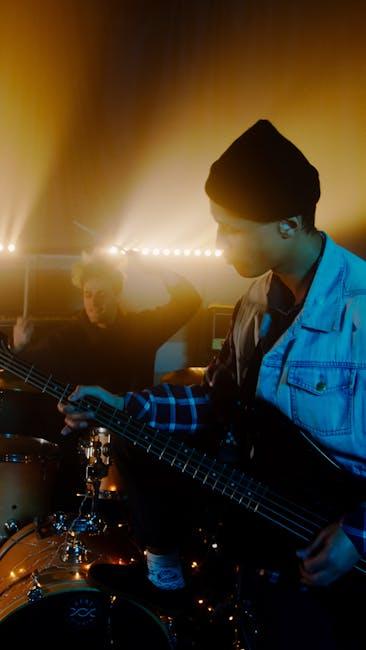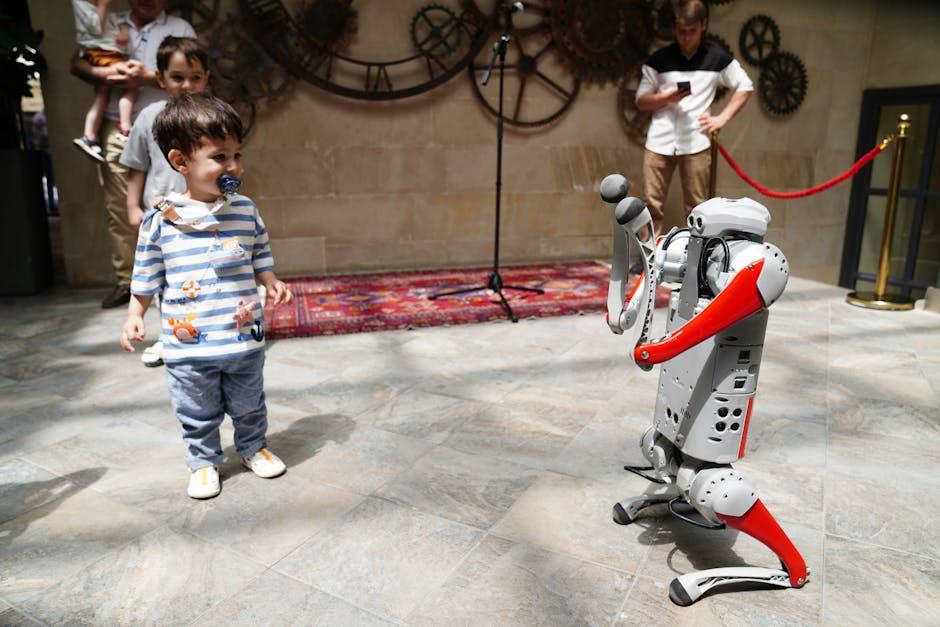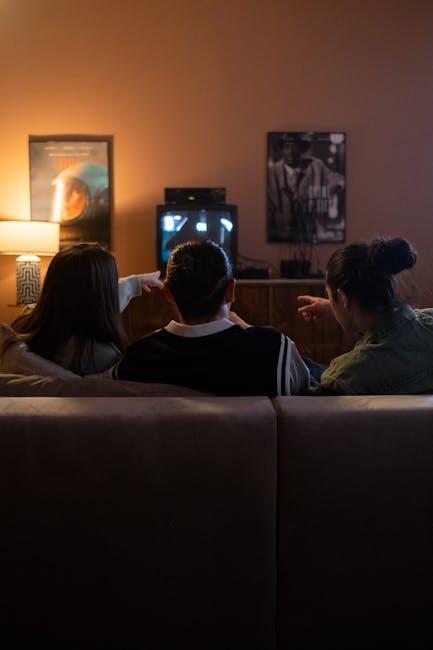In the ever-evolving landscape of television and streaming, familiar stories are finding fresh voices and renewed energy through the art of the reboot. What was once a nostalgia-driven gamble has transformed into a strategic revival, breathing new life into beloved series while attracting a new generation of viewers. As classic characters return to the screen with updated perspectives, storytelling techniques, and contemporary sensibilities, rebooted shows are carving out their own space between homage and innovation. This article explores how these revived narratives are striking a delicate balance—honoring the past while embracing the future—and why audiences keep coming back for chapters rewritten and reimagined.
Table of Contents
- Reimagining Classic Narratives for Modern Audiences
- Balancing Nostalgia with Fresh Storytelling
- Casting Choices that Bridge Generations
- Leveraging Technology to Enhance Viewer Experience
- Marketing Strategies that Reignite Fandoms
- Measuring Success Beyond Traditional Ratings
- Q&A
- Closing Remarks

Reimagining Classic Narratives for Modern Audiences
Many beloved stories from decades past are undergoing transformative updates that breathe fresh vitality into familiar worlds. These reimagined narratives often introduce diverse characters, contemporary themes, and innovative storytelling techniques, allowing timeless tales to resonate with today’s viewers. Creators blend nostalgia with novelty, ensuring that long-time fans and new audiences alike discover meaningful connections and fresh perspectives through enhanced visual effects, modernized dialogue, and culturally relevant issues.
Success lies in the delicate balance between honoring the original essence and exploring uncharted creative territory. Consider how key elements are adapted:
- Character development: Adding depth and complexity to protagonists and antagonists to reflect modern societal nuances.
- Plot modernization: Updating story arcs to address current global concerns and ethical dilemmas.
- Artistic style: Incorporating cutting-edge visuals and sound design to captivate a digital-savvy generation.
| Classic Show | Reboot Element | Modern Twist |
|---|---|---|
| Time-Travel Mystery | Expanded backstory | Non-linear narrative with diverse cast |
| Detective Drama | Enhanced technology | Focus on cyber-crimes and AI ethics |
| Fantasy Quest | More inclusive mythology | Representative characters & eco-themes |

Balancing Nostalgia with Fresh Storytelling
Reimagining beloved series demands a delicate dance between honoring the original essence and injecting innovative elements that resonate with today’s audience. Creators often weave classic themes with contemporary issues, ensuring the story feels both familiar and refreshingly relevant. This balance invites longtime fans to reconnect with cherished characters, while new viewers discover compelling narratives crafted for the modern era.
Successful revivals frequently adopt a multi-layered approach:
- Preserving core characters but evolving their journeys and relationships
- Updating settings and scenarios to reflect current societal contexts
- Incorporating fresh creative voices to offer novel perspectives
| Original Appeal | Modern Twist |
|---|---|
| Nostalgic humor and catchphrases | Diverse storytelling with relatable conflict |
| Linear story arcs | Complex, non-linear plots |
| Classic character stereotypes | Nuanced, multifaceted personalities |
This synergy of nostalgia and innovation breathes new life into familiar worlds, inviting audiences to both reminisce and explore previously uncharted narrative territory.

Casting Choices that Bridge Generations
In the world of television reboots, casting directors are expertly blending iconic veterans with fresh young talent to create a dynamic viewing experience that appeals across age groups. By pairing beloved actors from the original series with emerging stars, these shows create a harmonious balance of nostalgia and novelty. This strategy not only honors the legacy of the original but also injects new energy that resonates with younger audiences. For example, a classic sitcom might feature a lead character originally played by a household name from the ’90s alongside a rising star known for their social media presence.
Such casting decisions open doors for storytelling that is richer and more layered, reflecting both the past and the present. This fusion helps bridge generational gaps in fanbases, sparking conversations between parents and children or between longtime enthusiasts and newcomers. The impact of this approach can be summarized in the following table, showcasing typical generational casting pairings:
| Original Actor | New Talent | Role Dynamic |
|---|---|---|
| Veteran Lead | Young Rising Star | Mentor & Prodigy |
| Classic Supporting Actor | Popular Influencer | Family Member & Peer |
| Iconic Character | Fresh Face | Legacy Heir & New Voice |

Leveraging Technology to Enhance Viewer Experience
Modern technology has revolutionized how audiences engage with rebooted television shows, making the viewing experience far more immersive and interactive. Through the integration of augmented reality (AR) and virtual reality (VR), viewers can now step into the world of their favorite characters, exploring iconic sets or reliving key scenes from a personal perspective. This transformation not only reignites nostalgia but also captivates a new generation of fans, bridging the gap between past and present storytelling.
In addition to immersive tech, data-driven personalization plays a crucial role in tailoring content to individual preferences. Streaming platforms utilize AI algorithms to recommend episodes, alternate endings, or behind-the-scenes content based on viewing habits. Below is a snapshot of technology features enhancing viewer interaction:
| Technology | Feature | Benefit |
|---|---|---|
| Augmented Reality (AR) | Interactive character experiences | Deepens emotional connection |
| Virtual Reality (VR) | Immersive environment exploration | Enhances viewer engagement |
| AI-driven Recommendations | Personalized content feeds | Increases viewer satisfaction |
| Social Media Integration | Real-time fan interactions | Builds active community |
- Enhanced visual effects to revamp classic scenes with modern artistry
- Interactive polls and fan voting to influence reboot storylines
- Multi-platform accessibility offering seamless viewing on various devices

Marketing Strategies that Reignite Fandoms
One effective approach to reviving interest in beloved series is through interactive campaigns that involve fans directly. Social media challenges, exclusive behind-the-scenes content, and fan art contests breathe new life into classic franchises by fostering a sense of ownership and connection among longtime enthusiasts and newcomers alike. Additionally, collaborating with popular influencers who have a dedicated following helps bridge the gap between generations of fans, broadening the show’s reach and ensuring its cultural relevance.
Strategically timed nostalgia drops such as vintage merchandise, limited-run Blu-ray editions, and reunion events serve as powerful nostalgia triggers, reigniting passion for the original content. Below is a simple comparison of key tactics and outcomes often used in successful fandom revivals:
| Strategy | Fan Engagement | Long-term Impact |
|---|---|---|
| Interactive Social Media | High | Strong Community Growth |
| Merchandise & Collector’s Items | Moderate | Increased Revenue Streams |
| Influencer Partnerships | High | Expanded Demographics |
| Live Events & Reunions | Variable | Boosted Publicity |

Measuring Success Beyond Traditional Ratings
When it comes to rebooted shows, success can’t be confined solely to traditional Nielsen ratings or initial viewership numbers. The landscape of television has evolved, with streaming platforms, digital engagement, and social media conversations all playing pivotal roles. Modern audiences demonstrate their connection through a variety of channels, from binge-watching entire seasons on release day to passionate fan theories and trending hashtags that sustain buzz well beyond the premiere.
Networks and producers are now embracing a more holistic measurement of impact, including factors such as:
- Online engagement and social media sentiment
- Subscriber retention or growth tied to specific show releases
- Merchandising and licensing revenues
- Critical acclaim and streaming longevity
| Success Metric | Traditional View | Modern Perspective |
|---|---|---|
| Viewership | Live Nielsen ratings | On-demand streaming & delayed views |
| Audience Interaction | Viewer polls and call-ins | Social media engagement and fan forums |
| Revenue | Advertising during broadcast | Merchandise, licensing & global streams |
Q&A
Q&A: Rebooted Shows Getting New Life
Q1: What exactly is a rebooted show?
A rebooted show is a television series that takes an existing show—often one that ended years ago—and revives it, typically with fresh storylines, new cast members, or updated themes while keeping the core essence intact.
Q2: Why are networks and streaming platforms so interested in rebooting shows?
Reboots offer a built-in audience familiar with the original series, reducing the risk compared to launching an entirely new concept. Additionally, nostalgia draws viewers in, while modern updates can attract new generations, creating a broader fan base.
Q3: How do rebooted shows balance honoring the original with appealing to today’s viewers?
Successful reboots strike a delicate balance by preserving beloved elements—memorable characters, iconic settings, signature tone—while modernizing storylines, diversifying casts, and reflecting contemporary social issues to resonate with today’s audiences.
Q4: Can rebooted shows surpass their originals in popularity or critical acclaim?
Yes, though it’s rare and challenging. Some reboots have garnered critical praise and even eclipsed the original’s popularity by innovating dramatically or tapping into cultural moments. However, many serve more as fan service or casual entertainment rather than groundbreaking TV.
Q5: What challenges do rebooted shows commonly face?
They risk disappointing fans attached to the original, failing to capture the magic, or feeling redundant. Creators must also navigate rights complications or outdated premises that need reimagining to stay relevant.
Q6: Are reboots more common in certain genres?
Yes, genres like sitcoms, supernatural dramas, and crime procedurals frequently see reboots due to their strong fan followings and adaptable premises. Animation also enjoys reboots, often appealing to both nostalgic adults and new audiences.
Q7: How do audiences generally respond to rebooted shows?
Reactions vary widely—some embrace reboots as comforting returns or exciting updates, while others criticize them as uninspired cash grabs. The reception often hinges on execution, respect for the original, and timing.
Q8: What does the future hold for rebooted shows?
As entertainment platforms compete for attention, reboots likely remain a staple strategy. However, evolving viewer preferences and demands for originality mean that while reboots will persist, they’ll need to innovate creatively or blend with new storytelling forms to thrive.
Closing Remarks
As the entertainment landscape continues to evolve, rebooted shows stand as a testament to storytelling’s enduring power to adapt and resonate across generations. Breathing new life into familiar tales not only rekindles nostalgia but also embraces fresh perspectives, inviting both old fans and new viewers to embark on reimagined journeys. Whether these revivals soar or stumble, they undeniably reflect a dynamic industry eager to balance reverence for the past with the promise of the future—proving that sometimes, hitting reset can be the key to unlocking a whole new chapter.

